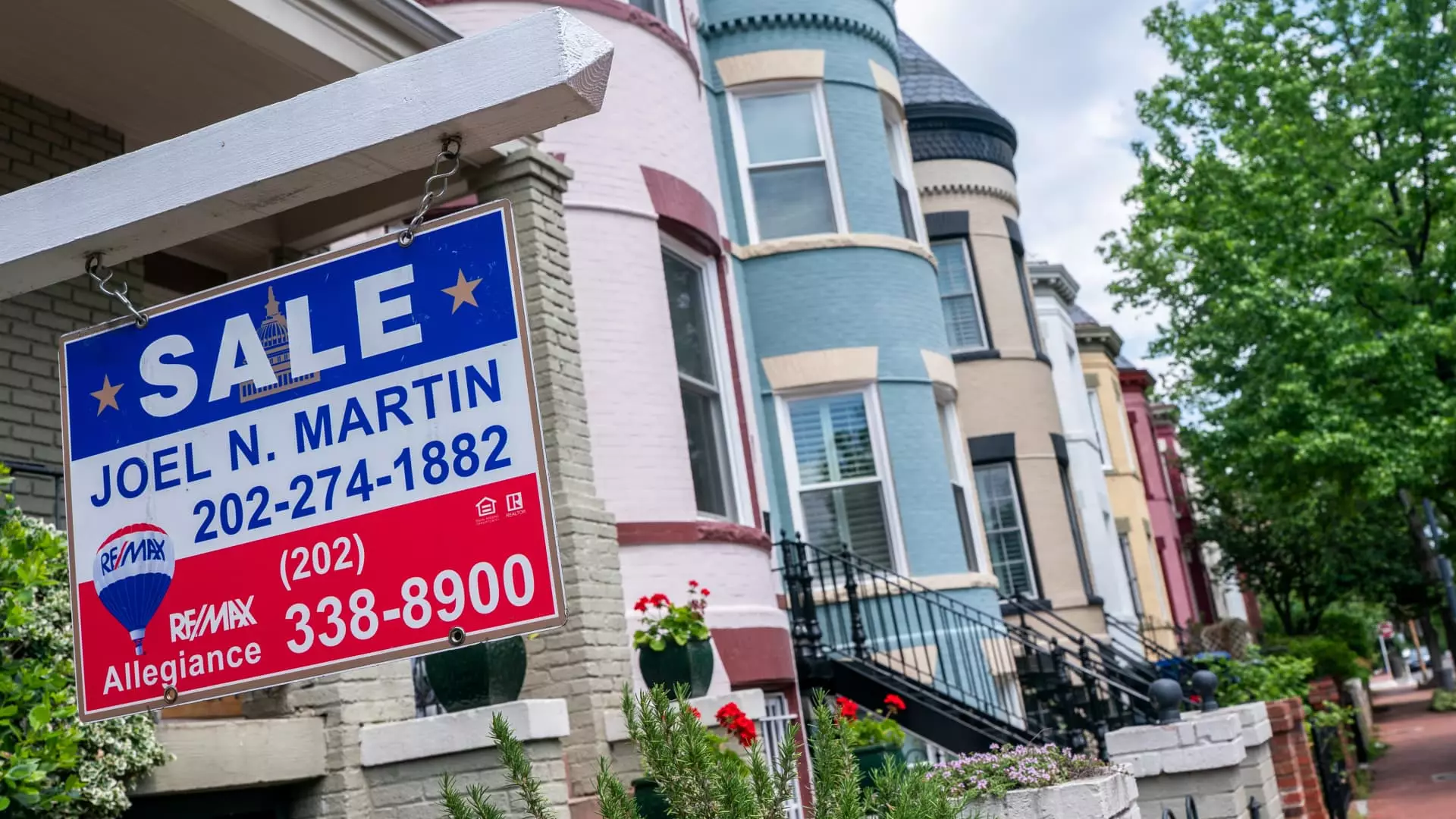The spring housing market stands at a critical crossroads, navigating through a storm of inflated interest rates and plummeting consumer confidence. As reported by the National Association of Realtors (NAR), sales of previously owned homes saw a slight decline of 0.5% from March, landing at an annualized rate of just 4 million units. This marks the slowest April on record since 2009, which begs the question: How long can we expect to endure this malaise? In an ironic twist, expectations from housing economists projected a rise of 2.7%, creating a stark disparity between hope and reality. This discrepancy sheds light on a pervasive sentiment of uncertainty shadowing potential buyers and sellers alike.
The numbers speak for themselves, echoing an unsettling pattern that has persisted for the last three years. According to Lawrence Yun, NAR’s chief economist, home sales have languished at 75% of pre-pandemic levels, despite the addition of a staggering seven million jobs to the economy. It’s as if the housing market, a fundamental pillar of the American dream, is being suffocated by two main adversaries: high mortgage rates and a climate of distrust among consumers. The pent-up demand for housing is palpable, yet remains tantalizingly out of reach—an unfulfilled desire awaiting a spark, perhaps from a decline in mortgage rates.
Inventory Insights: A Glimmer of Hope or a False Dawn?
In a surprising turn, the inventory of available homes jumped by 9% month-over-month and sits nearly 21% higher than last year, totaling 1.45 million homes by the end of April. This surge has established a 4.4-month supply at the current sales pace, the highest observed in five years. However, juxtaposed to the six-month supply considered balanced, it still suggests an underlying fragility in the market. Hence, one must ask whether this uptick in inventory is a genuine sign of market health or merely a fleeting respite before another downturn.
The median existing home price has reached $414,000, boasting a year-over-year increase of only 1.8%. While this statistic may feel reassuring at first glance, it belies a troubling reality: the slowest appreciation rate since July 2023. The South and West regions are witnessing price drops, an anomaly that underscores the volatility permeating the market. Yun aptly describes the current landscape as a “mild seller’s market,” but with elevated inventory levels, buyers are finally in a position to negotiate better deals—if they are brave enough to wade through the turbulent waters.
The Psychology of Homebuyers: Fear and Hesitation
Perhaps the most concerning aspect of this current crisis is the rising cancellation rate, which has seen a climb to 7% of sales in April—up from a recent average of 3% to 4%. This spike in cancellations signals an alarming apprehension among buyers, who are likely grappling with fears of overcommitting in a notoriously unstable market. Such a psychological battleground invites skepticism, leaving those looking to jump into homeownership confronted with the heavy baggage of uncertainty.
Interestingly, the activity in the luxury sector remains relatively robust. Homes priced above $1 million recorded an almost 6% increase in sales compared to last year, while those in the more modest range of $100,000 to $250,000 faced a significant dip of over 4%. This class divide in housing trends raises critical questions about economic disparities, forcing us to confront the stark division between the affluent few and the many still struggling to find affordable housing. Yun suggests that the waning enthusiasm in the high-end market correlates with recent stock market fluctuations, hinting at the larger economic picture at play.
Ultimately, the intricate dance of the housing market reflects broader societal issues. As we witness rising interest rates and stagnating sales, it’s crucial to acknowledge the alarming consequences this has not only on individual buyers but on the economy at large. The challenges are microcosmic of a system straining under the weight of its own contradictions, leaving us to ponder whether we can summon the political will to enact meaningful changes. Without such a shift, the possibility of a housing market resurrection feels as distant as a mirage on the horizon.

Leave a Reply